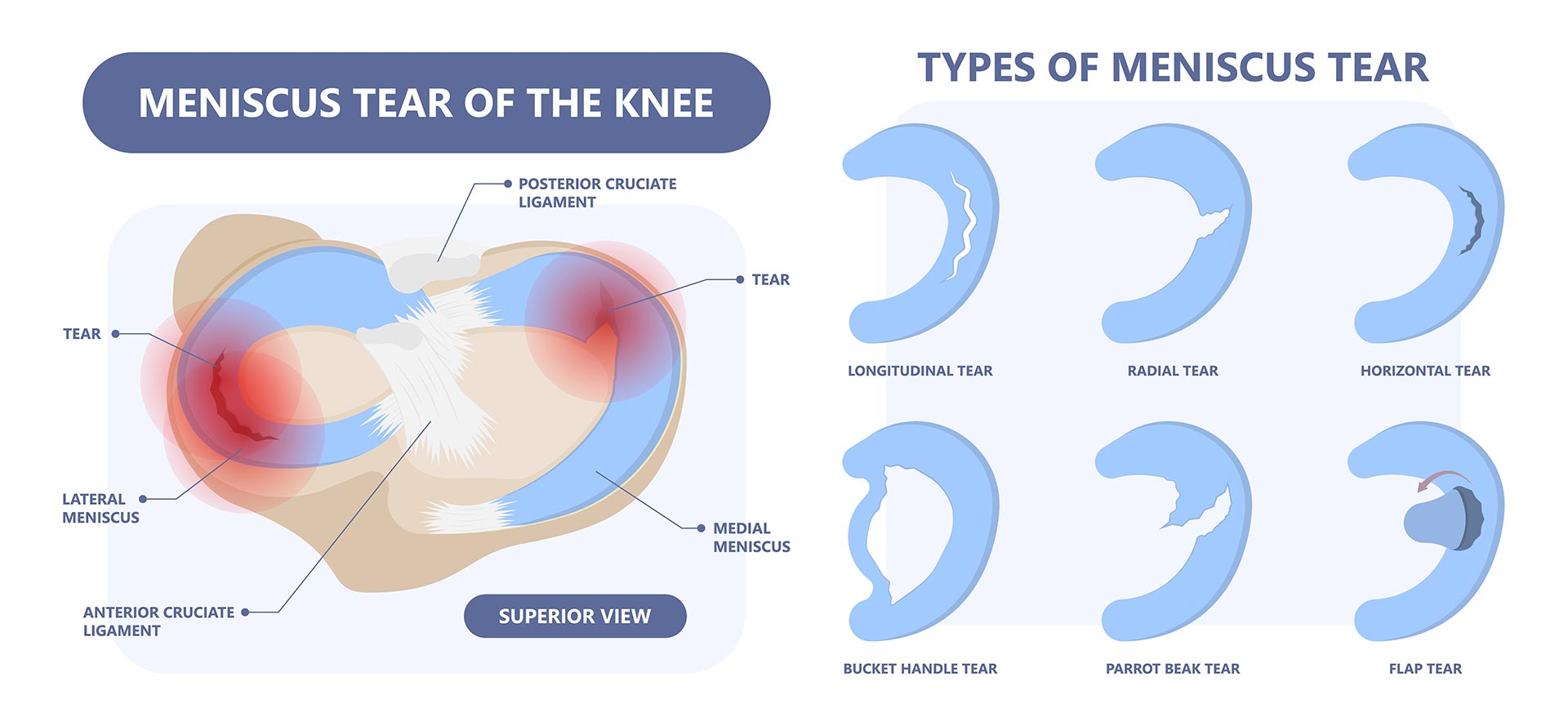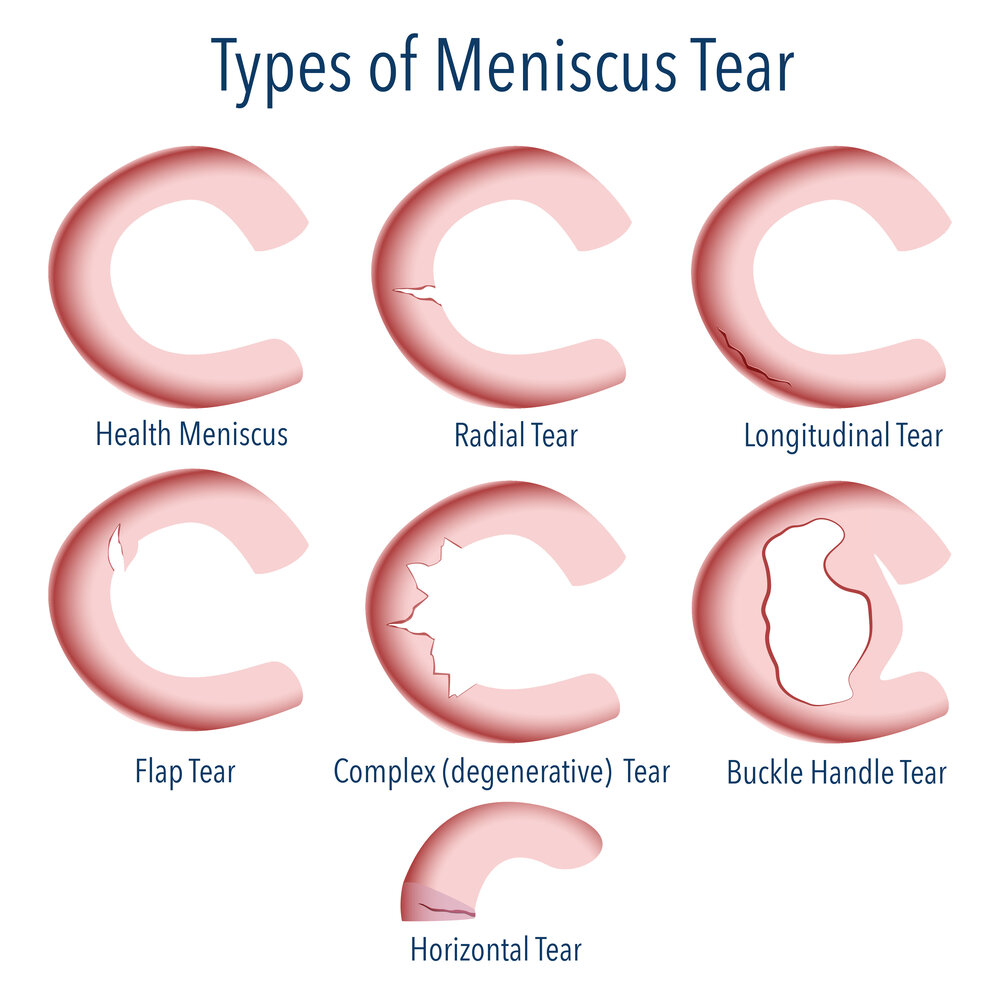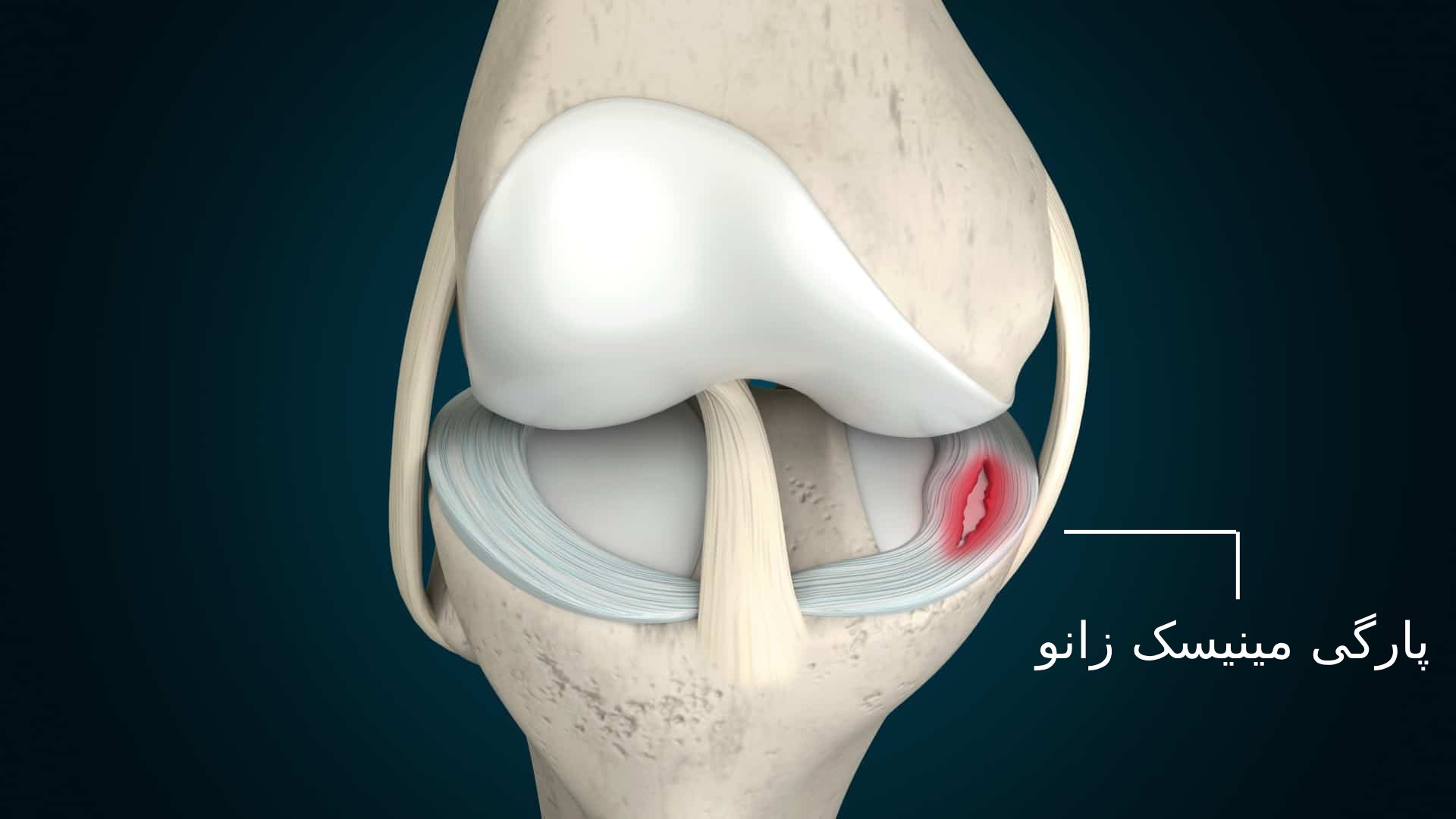Understanding Torn Meniscus

The meniscus is a C-shaped piece of cartilage that acts as a shock absorber in the knee joint. It cushions the bones and helps to distribute weight evenly. When the meniscus tears, it can cause pain, swelling, and difficulty moving the knee.
Anatomy and Role of the Meniscus
The meniscus is made of tough, rubbery cartilage that sits between the thighbone (femur) and the shinbone (tibia). There are two menisci in each knee: the medial meniscus, which is located on the inner side of the knee, and the lateral meniscus, which is located on the outer side of the knee.
The menisci play several important roles in knee function:
* Shock absorption: They act as cushions between the bones, absorbing impact and reducing stress on the joint.
* Joint stability: They help to stabilize the knee joint and prevent the bones from moving out of alignment.
* Distribution of weight: They help to distribute weight evenly across the knee joint.
Types of Meniscus Tears
Meniscus tears can occur in a variety of ways, and they can be classified based on their location and severity.
* Horizontal tears: These tears occur across the width of the meniscus.
* Vertical tears: These tears occur up and down the length of the meniscus.
* Radial tears: These tears are shaped like a spoke on a wheel.
* Degenerative tears: These tears occur as a result of wear and tear on the meniscus over time.
Causes of Meniscus Tears
Meniscus tears are often caused by a sudden twisting or pivoting motion of the knee. This can happen during sports activities, such as football, basketball, or skiing. Other causes of meniscus tears include:
* Direct blow to the knee: A direct impact to the knee can cause a tear in the meniscus.
* Degeneration: As people age, the meniscus can become thinner and more prone to tears.
* Overuse: Repeated stress on the knee joint can lead to a meniscus tear.
Symptoms of a Torn Meniscus
The symptoms of a torn meniscus can vary depending on the severity of the tear. Some people may experience only mild pain, while others may have significant pain and difficulty walking. Common symptoms include:
* Pain: Pain in the knee, especially when twisting or rotating the knee.
* Swelling: Swelling in the knee joint.
* Stiffness: Stiffness in the knee, making it difficult to bend or straighten the knee.
* Locking: The knee may lock in place, making it difficult to move.
* Clicking or popping: You may hear a clicking or popping sound when you move your knee.
Risk Factors for a Torn Meniscus
Several factors can increase your risk of developing a torn meniscus. These include:
* Age: The risk of a torn meniscus increases with age.
* Gender: Men are more likely to tear their meniscus than women.
* Occupation: Certain occupations, such as construction work or manual labor, can increase the risk of a torn meniscus.
* Sports: Certain sports, such as football, basketball, and skiing, can increase the risk of a torn meniscus.
* Obesity: Obesity can put extra stress on the knee joint, increasing the risk of a torn meniscus.
Diagnosis and Treatment Options

Diagnosing a torn meniscus involves a comprehensive evaluation that combines physical examination, imaging tests, and sometimes, arthroscopy. The goal is to determine the extent of the tear, its location, and the presence of any associated injuries. Understanding the diagnosis is crucial for guiding the most appropriate treatment approach, which can range from conservative measures to surgical interventions.
Diagnostic Methods
Diagnosing a torn meniscus typically involves a combination of methods to accurately assess the extent and location of the tear. These methods include:
- Physical Examination: This involves assessing the patient’s symptoms, such as pain, swelling, and limitations in movement. The doctor will also perform specific maneuvers to evaluate the stability of the knee and check for tenderness over the meniscus.
- Imaging Tests:
- Magnetic Resonance Imaging (MRI): This is the gold standard for diagnosing a torn meniscus. It provides detailed images of the knee joint, allowing the doctor to visualize the meniscus and identify the location and severity of the tear. MRI is particularly useful for detecting subtle tears that may not be apparent on other imaging studies.
- X-rays: While X-rays cannot directly visualize the meniscus, they can help rule out other conditions, such as fractures, and assess the overall alignment of the knee joint.
- Arthroscopy: This minimally invasive procedure involves inserting a small camera and surgical instruments into the knee joint. It allows for direct visualization of the meniscus and can be used both for diagnosis and treatment.
Treatment Options, Torn meniscus
Treatment options for a torn meniscus depend on several factors, including the severity of the tear, the patient’s age, activity level, and overall health.
- Conservative Treatment:
- Rest, Ice, Compression, and Elevation (RICE): This initial approach aims to reduce pain and inflammation. It involves resting the knee, applying ice to the area, using compression bandages, and elevating the leg.
- Physical Therapy: This focuses on strengthening the muscles surrounding the knee, improving flexibility, and restoring range of motion.
- Medications: Over-the-counter pain relievers, such as ibuprofen or naproxen, can help manage pain and inflammation. In some cases, the doctor may prescribe stronger medications, such as corticosteroids, for short-term relief.
- Surgical Treatment:
- Arthroscopic Surgery: This minimally invasive procedure involves making small incisions in the knee and inserting a camera and surgical instruments. It allows for precise visualization of the torn meniscus and enables the surgeon to perform various procedures, such as:
- Meniscectomy: This involves removing the torn portion of the meniscus. It is often performed for tears that are too large or complex to repair.
- Meniscus Repair: This involves stitching the torn meniscus back together. It is usually performed for smaller, stable tears.
- Arthroscopic Surgery: This minimally invasive procedure involves making small incisions in the knee and inserting a camera and surgical instruments. It allows for precise visualization of the torn meniscus and enables the surgeon to perform various procedures, such as:
Benefits and Drawbacks of Treatment Options
| Treatment Option | Benefits | Drawbacks |
|---|---|---|
| Conservative Treatment |
|
|
| Surgical Treatment |
|
|
Recovery and Rehabilitation

Recovering from a torn meniscus surgery involves a gradual process of healing and regaining strength, flexibility, and stability in your knee. This section Artikels the typical recovery timeline, provides a comprehensive rehabilitation program, and offers tips for managing pain and swelling during your recovery journey.
Typical Recovery Process
The recovery process after meniscus surgery typically involves several stages, each with specific goals and exercises.
- Immediate Post-Surgery (Days 1-3): This initial phase focuses on controlling pain and swelling. Your doctor may recommend using crutches, ice packs, and elevation to manage discomfort. Light range of motion exercises may be introduced to prevent stiffness.
- Early Recovery (Weeks 1-4): During this phase, you will gradually increase your weight-bearing capacity and begin strengthening exercises. Your focus will be on regaining flexibility and improving knee stability. Physical therapy sessions will guide you through these exercises.
- Intermediate Recovery (Weeks 4-12): This stage involves further strengthening and increasing your activity levels. You may start incorporating exercises like squats, lunges, and cycling to improve your functional mobility. Your physical therapist will continue to monitor your progress and adjust the exercises accordingly.
- Late Recovery (Weeks 12-24+): As you progress through this stage, you’ll continue to strengthen your knee and improve your overall fitness. Your goal will be to return to your desired level of activity and participate in sports or other physical activities. It’s important to listen to your body and avoid overexertion during this phase.
Rehabilitation Program
A comprehensive rehabilitation program after meniscus surgery is crucial for optimal recovery. The program should be tailored to your individual needs and progress. Here’s a sample program that includes exercises for strengthening, flexibility, and stability:
Strengthening Exercises
- Quadriceps Strengthening: Lie on your back with your knee straight and your leg raised. Slowly lift your leg a few inches off the ground and hold for a few seconds. Repeat this exercise 10-15 times.
- Hamstring Strengthening: Lie on your stomach with your knee straight. Slowly lift your leg a few inches off the ground and hold for a few seconds. Repeat this exercise 10-15 times.
- Calf Strengthening: Stand on a slightly elevated surface and slowly lower your heel to stretch your calf muscles. Hold for a few seconds and repeat 10-15 times.
- Leg Press: Use a leg press machine to strengthen your quadriceps and hamstrings. Start with a light weight and gradually increase the resistance as you get stronger.
- Knee Extensions: Sit on a chair with your feet flat on the floor. Extend your knee and hold for a few seconds. Repeat this exercise 10-15 times.
Flexibility Exercises
- Hamstring Stretch: Sit on the floor with your legs extended. Reach forward and try to touch your toes. Hold the stretch for 30 seconds.
- Quadriceps Stretch: Stand with your feet shoulder-width apart. Bend your knee and grab your foot with your hand. Pull your heel towards your buttock and hold the stretch for 30 seconds.
- Calf Stretch: Stand facing a wall with your feet shoulder-width apart. Lean forward and place your hands on the wall. Keep your back straight and hold the stretch for 30 seconds.
- Knee Flexion: Lie on your back with your knee bent. Gently pull your heel towards your buttock and hold the stretch for 30 seconds.
Stability Exercises
- Single-Leg Squats: Stand on one leg and slowly lower your body until your knee is bent at a 90-degree angle. Keep your back straight and core engaged. Repeat this exercise 10-15 times on each leg.
- Balance Exercises: Stand on one leg and try to maintain your balance for 30 seconds. Repeat this exercise on each leg. You can also use a balance board or wobble board to challenge your stability.
- Side-Stepping: Step sideways, keeping your feet shoulder-width apart and your core engaged. Repeat this exercise 10-15 times in each direction.
- Mini-Squats: Stand with your feet shoulder-width apart and slowly lower your body as if you were sitting down. Keep your back straight and core engaged. Repeat this exercise 10-15 times.
Managing Pain and Swelling
Managing pain and swelling is an important part of recovery. Here are some tips:
- Rest: Avoid activities that cause pain or swelling. Give your knee time to heal.
- Ice: Apply ice to the affected area for 15-20 minutes at a time, several times a day.
- Compression: Use a compression bandage to reduce swelling.
- Elevation: Keep your leg elevated above your heart to reduce swelling.
- Pain Medication: Your doctor may prescribe pain medication to help manage discomfort.
A torn meniscus can feel like a sudden betrayal from your knee, robbing you of the freedom to move. But the good news is, with the right approach, you can bounce back! Learn about the different treatment options and recovery strategies for a torn meniscus, and get back to your active life.
meniscus tear recovery can be a journey, but it’s one you can conquer. Remember, a torn meniscus doesn’t have to be the end of your story, it’s just a chapter.
A torn meniscus can be a serious injury, especially for athletes. Just ask Jahmyr Gibbs, the rising star in the NFL, who has shown remarkable resilience despite facing this challenge. Jahmyr Gibbs has proven that even with a torn meniscus, hard work and dedication can lead to success.
It’s a testament to the strength and determination of athletes who face adversity, pushing them to rise above the pain and achieve greatness.
